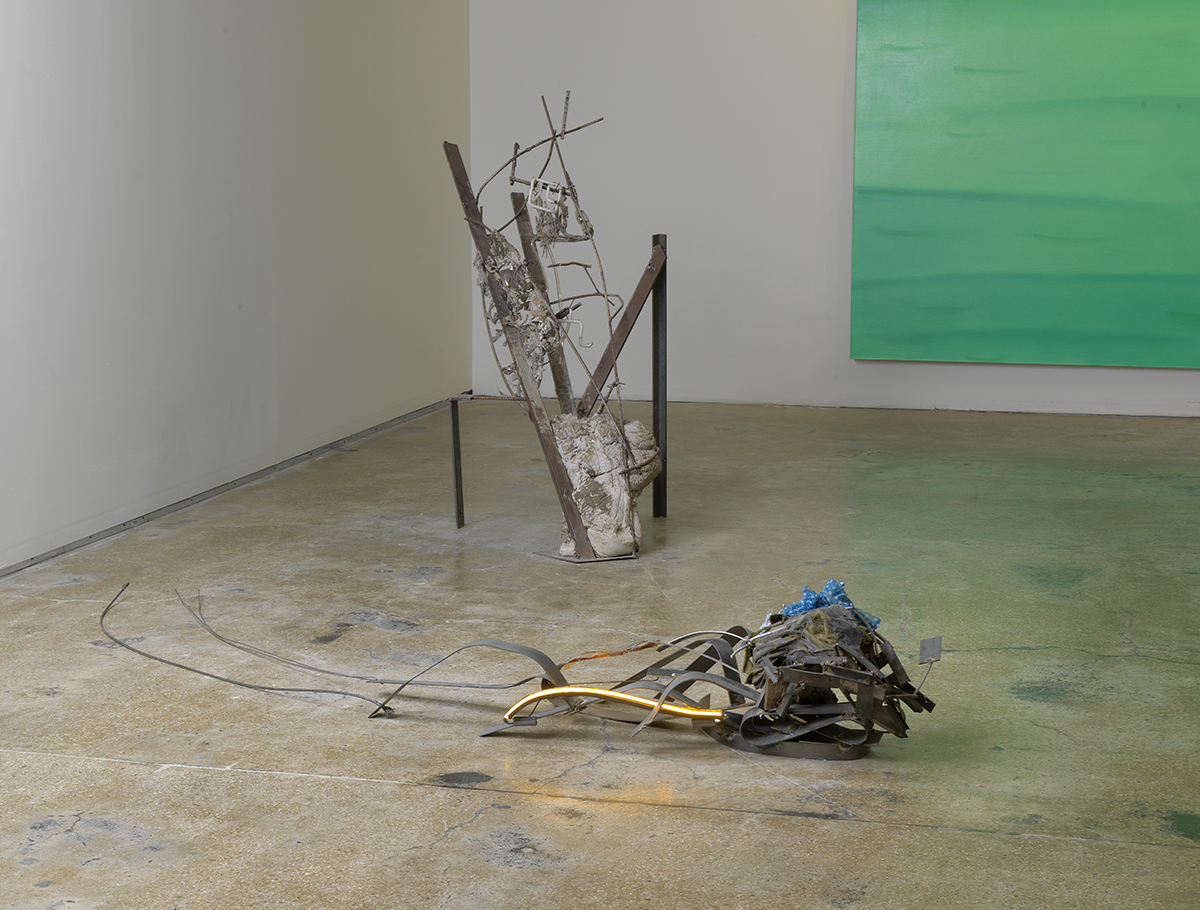by Kate Harding
Where it stands, the way it stands, the posture, the posture leaning, don’t stand, don’t stand so, don’t stand so close to me. Which way over, under and through the bridge on my way, in my way. What is the capacity, how much can I fit in here? How much can I push down into this space here. What’s that over there? Who’s there?
Ummmmmm. Shoot, that wasn’t supposed to happen. I’ll keep it.
The buzzing of the light as it flickers on just past dusk, now two, now three, now all of them. Open for business. 5 for a dollar. 4. 9.
I made you, and you are me extended outward in time and space, to pick up the baton and carry it, take it from my hands in our continuum. Ok now back … can’t you see? It’s this elliptical we’re in. She made us this way. Who’ll be next. Where’d you come from? I used to be under the earth, I used to be a building, I was gas and light. We’re siblings. We’re siblings and she’s moving again. Stick with me, I’ve been through this four times since last year. You live long enough, you’ll be bicoastal.
Jo Nigoghossian’s 4.9 and Xx were shown in proximity, though they were conceived separately and at different times. Both titles are made of two numerals or letters. While straightforwardly descriptive (the 4.9 refers to the unlit neon pieces in the work itself), Nigoghossian is at once abstract and painstakingly symptomatic. The material’s form could speak to a ripping apart, if it wasn’t that, upon inspection, they are so clearly rendered with intention—even if that intention is to include the artist’s “mistakes.” These works reside in the post-rip, but reformation, the putting back together again as well as the “as found.” Bits are sometimes amassed from the same locus, and others take longer to pin point and find a familial source.
Broken, cut, reassembled building materials with wayward but well placed neon—shining or no—seem particularly resonant in this show of Sandy Survivors. 4.9’s light is out. It came before the younger piece in its company. Xx got a strip of electric shining yellow and some polka dot tulle. So it goes, those that come first pave the way. There’s only so much you can put on one piece before its time to move on, just like there’s always a time to open to new experiences—new work to be done—room for new mistakes, deeper ones than were possible before. The proximity of these two pieces again is important, and while Nigoghossian has spoken to the effect that a work can have in terms of the mood of their viewer, I would insert that there is a beckoning between the works themselves, moving the work through time in relation to each other and then outward, carrying with it a marking of moment. However an instant collects itself in space, pregnant with what may have come before, it exists in a rolling continuum. Whatever breath is held is always released one way or another.
